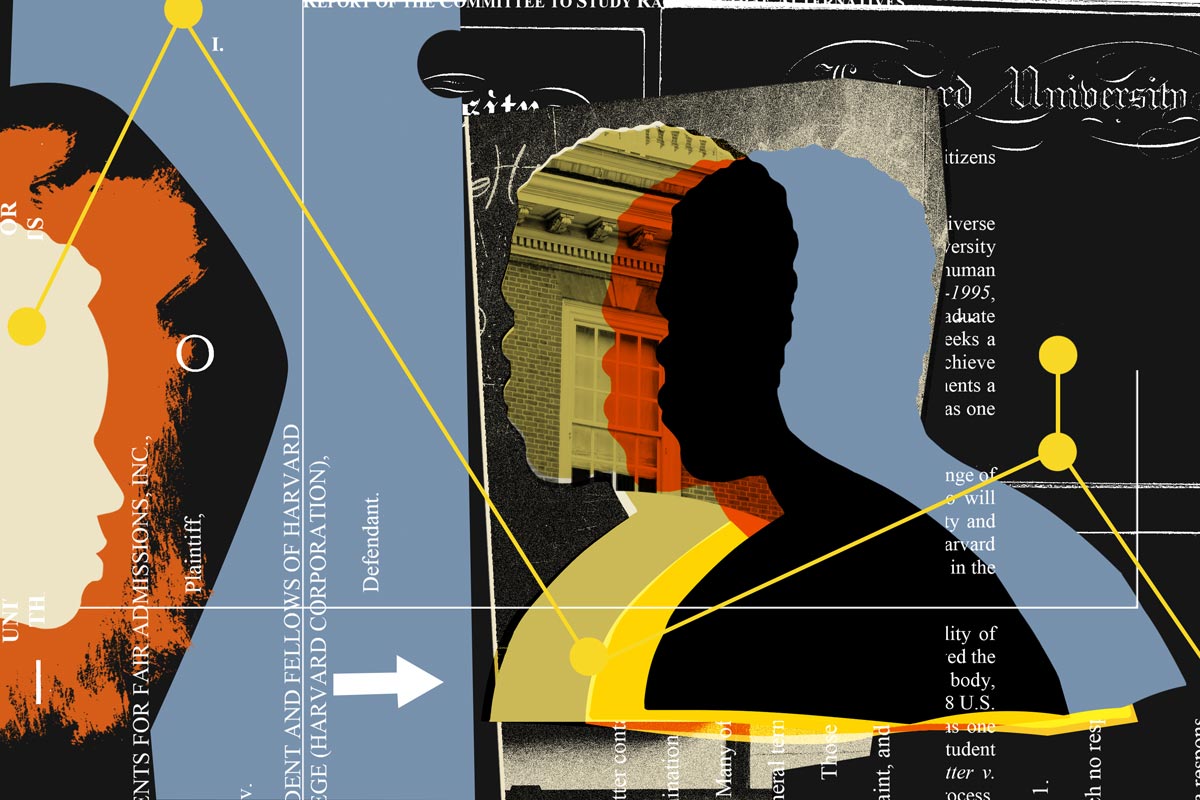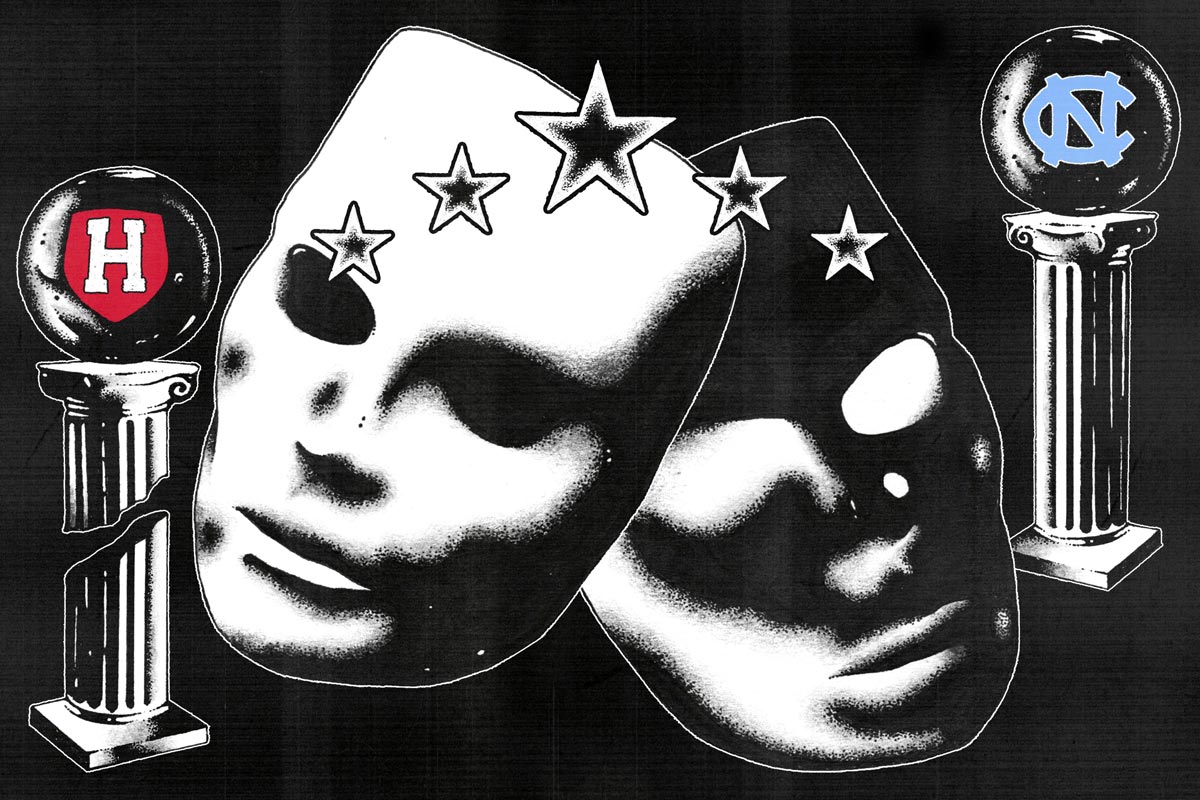THE FIGHT FOR AFFIRMATIVE ACTION
The Supreme Court will soon hear two lawsuits—SFFA v. Harvard and SFFA v. UNC—that target race-conscious university admissions. The outcome is all but certain. The Court’s rightwing majority will prohibit public and private universities from considering an applicant’s race.
The stakes are high. Most obviously, the cases could eliminate a university’s right to remedy racial inequality and integrate its campus. But the consequences are not just material. These cases revive longstanding debates over what, if anything, America must do to overcome its legacy of legalized white supremacy. When the Supreme Court denounces race-consciousness, it is telling a particular—and deeply contested—story about America. Central to that story is the claim that but for affirmative action, our universities would select students through race-neutral and objective processes that reward talent and effort, not inherited racial advantage. By extension, the Court’s rhetoric will rationalize as natural and just the enduring overrepresentation of white men in positions of power and prestige; and thereby legitimize the near absence of Asian American firefighters and police officers, Black doctors and lawyers, Latinx Senators and CEOs, and American Indian PhDs and MBAs.
Affirmative action will not survive this Supreme Court. But that fate should not counsel inaction. To the contrary, the ongoing assault on multiracial democracy beckons us to marshal a counter-narrative that centers racism’s persistent and pervasive force in American society. Even if the outcomes appear preordained, these cases can sharpen two insights from 2020’s global uprising for racial justice: that racism is structural, and that we cannot overcome racism without accounting for it.
This is an intergenerational story that implicates the laws, policies, and practices that enable white families and communities to extract, hoard, and accumulate public resources.
Ironically then, litigation that portends the end of affirmative action also provides occasion to rehabilitate race-consciousness as a moral and democratic imperative. To do so, advocates can uplift the many ways that race matters before, during, and after admissions. These correctives challenge the national mythology that the Civil Rights Movement—and the antidiscrimination laws then enshrined—ushered in a post-racial America. They also disrupt dominant admissions stories—common to mainstream media and the institutional elite—that downplay and diminish race’s enduring force in admissions and throughout society.
Before Admissions
To ask how race matters before admissions invites us to tether the present to the past. This inquiry compels us first to consider: Has a university overcome its own legacy of racial exclusion?
UNC Chapel Hill, now defending its affirmative action policy before the Supreme Court, offers an illustrative example. Founded on stolen Cherokee Land in 1789, UNC formally excluded non-white students for its first 165 years. Even after the Supreme Court struck down racial segregation in Brown v. Board of Education, UNC refused to integrate. When federal courts directly intervened against UNC, the university spent another quarter century resisting federal mandates to desegregate. This dispute culminated when university leaders brokered a backroom deal with President Reagan’s administration—a deal that the NAACP lambasted as a “triple end run” around the federal courts, civil rights laws, and the Constitution. Among other concerns, the deal lacked specific requirements that civil rights leaders found essential to eliminate the vestiges of UNC’s legacy of racial exclusion. David S. Tatel, who had led desegregation efforts under the Carter administration, captured this sentiment when he lamented that “[t]his settlement doesn’t read like a desegregation plan. It reads like a joint U.S.-North Carolina defense of everything the system did.”
UNC has more recently taken some measures to rectify this history. In 1998, for example, UNC’s faculty leadership expressly marked diversity as an institutional prerogative. But even the district court recognized that “those efforts have fallen short of repairing the deep-seated legacy of racial hostility and disrespect for people of color.” Historian William Sturkey similarly documents UNC’s own revisionist history. The university celebrates its claim as the nation’s oldest public university—a title that rhetorically exorcises UNC’s uncomfortable past.
Shifting from the institution to the individual, we might also ask how race shapes each student’s trajectory before admissions. This is, in part, an intergenerational story that implicates the laws, policies, and practices that enable white families and communities to extract, hoard, and accumulate public resources. It is also a personal story; the same web of law, policy, and practice shapes the resources, coaching, and networks each student can access during their lifetime. Proximity to whiteness offers more than tangible resources. It also entails freedom from pernicious biases and unfriendly environments. Or as Devon Carbado puts it: “[White] students can traverse educational environments with (at a minimum) the benefit of the doubt, realize their academic potential without race-based burdens, and thus reflect that potential more effectively in their admissions file.”
During Admissions
Advocates often mobilize the concept of structural racism to explain racial disparities—whether on a university campus or corporate boardroom. Structural forces often unevenly distribute many of the resources necessary to attain positions of power and privilege. Such explanations, however, risk activating the faulty presumption that racial disparities reflect actual differences in ability, preparation, or potential. They do not.
These cases revive longstanding debates over what, if anything, America must do to overcome its legacy of legalized white supremacy.
Common measures of academic ability—like standardized tests, grades, and interviews—understate the existing talent and potential of students from negatively stereotyped groups. We tend to think of these metrics as “objective” and “neutral.” But decades of scholarship reveal that a significant portion of racial “achievement” gaps are illusory. Rather than capturing actual differences, they reflect measurement errors that inflate white students’ relative qualifications. When universities privilege such metrics, they contravene even shallow commitments to “merit.” Affirmative action, by countering such faulty measures, offers a more individualized, race-neutral, and “meritocratic” process.
After Admissions
Universities love to praise the benefits of student body diversity. Among other consequences, preaching “diversity” can rhetorically situate universities on the side of racial justice without having to truly perform racial justice. And when universities celebrate diversity, they often foreground how racial diversity enriches and deepens classroom conversation. Rarely do they emphasize that racial diversity is often a prerequisite to racial equality on campus.
Racial demographics shape the student experience. On historically white campuses, the lack of racial diversity sends a powerful, if implicit, message about who belongs. For students of color, visual underrepresentation can reify pernicious presumptions about incompetence and non-belonging. For white students, visual overrepresentation entrenches presumptions of competence and belonging. This dynamic helps to explain why Harvard’s white students remain untouched by racial stigma—even as 33 percent of them would not have been admitted but for their Legacy+ status (a category that includes the super-wealthy, the children of alumni, and athletes). Affirmative action, by promoting racial diversity, mitigates these unearned racial advantages that white students might otherwise enjoy.
The fight over affirmative action implicates more than a modest set of admissions policies. It is also a fight over competing visions of America. One vision relegates racism to an ignoble past. The other locates racism in the here and now. The forces targeting affirmative action have told their story. It is time we tell ours.
Boston University School of Law Professor Jonathan Feingold’s scholarship explores the relationship between race, law, and the mind sciences. Feingold co-authored an amicus brief on behalf of race-conscious admissions at Harvard and UNC, and his work has been cited in U.S. Supreme Court amicus briefs defending affirmative action.



